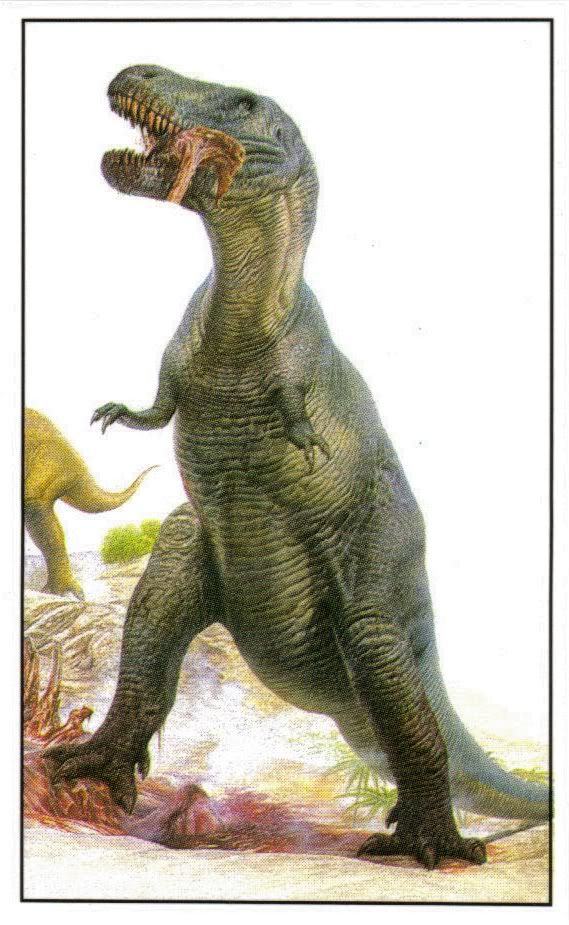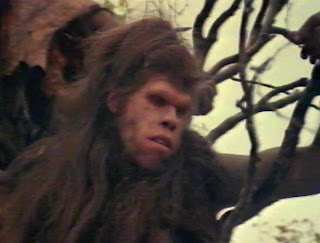Post by Tyrannosauron on Sept 9, 2010 10:39:10 GMT
There's still some lingering enthusiasm over the feathered dino debate from the "best Oviraptor" thread in the Dino toys folders, so I figured that it would be best to start a new thread here before more people get in trouble.
Here are some of the last few relevant posts that were left in that thread:

 but to say that the inferences we've drawn about dinosaurs as a result qualify as knowledge is just unscientific
but to say that the inferences we've drawn about dinosaurs as a result qualify as knowledge is just unscientific
It's scientific knowledge, yes, with its limitations, open to corrections. Not "dogmatic", of course.
OK. But you appear to make a big separation between non avian dinosaurs and avian dinosaurs, non avian being "mysterious". The "mystery" should be a matter of degree. We didn't observe any "living" Hesperornis or Concornis (avian), but you probably consider them less "mysterious" than Caudipteryx (non avian, initially considered as avian), and Caudipteryx less "mysterious" than Stegosaurus, wich is a *#€$~ monster :-)
Keep in mind that many birds of modern aspect and classification (like Vegavis) were already living in the Late Cretaceous. To be fair, you should compare Oviraptor with an ancient "non mysterious" bird. Bah, that's a lot of million years anyway. Forget it :-)
I don't know... but I would probably decide after considering the size and the environment of the animals to estimate the probability of hair or feather losing. Hyracotherium was a bit smaller in weight, and lived in woodlands. Oviraptor in an arid environment ? I think I would put some money on a partially naked, partially feathered Oviraptor.
Ok, your point is good, and I think you are right in a big part. But I'm not considering just taxonomy. I'm considering phylogeny, evolution, parsimony. Occam's razor... I think the distance between taxons or the "mystery" is not very relevant here. What is really relevant is the scientific evidence about what is the primitive, "default" feature in each case: fur in mammals, a feather covering in Maniraptora.


I'm not going to accept that certain species didn't have feathers when there is no evidence otherwise, especially considering that their closest relatives had them. Seriously, there is no evidence that any oviraptor had scales...or dromaeosaur for that matter. There is evidence for feathers, so aren't you basically accepting evidence that isn't there? Or perhaps bald dinosaurs are more popular after all.
It remains a matter of preference. There doesn't appear to be any physical evidence that this species, Oviraptor, was feathered or scaled. Therefore there are no evidential grounds for saying that one representation with feathers is more accurate than one with scales. I've trawled for the evidence and literally what it comes down to is that Oviraptor is very similar to something else and therefore was likely feathered. That's not scientific fact based on physical evidence it's scientific theory alone and certainly wouldn't win a case in a court of law. Believe me, If the actual evidence were there I'd happily go for the feathered representation however as things stand I personally prefer the unfeathered


It remains a matter of preference. There doesn't appear to be any physical evidence that this species, Oviraptor, was feathered or scaled. Therefore there are no evidential grounds for saying that one representation with feathers is more accurate than one with scales.
There is also no physical evidence that Smilodon was furry or scaled or feathered, or covered with long spikes, or multicolor tentacles. Therefore there are no evidential grounds for saying that one representation is more accurate than the others. So let's draw a tentacled Smilodon


It remains a matter of preference. There doesn't appear to be any physical evidence that this species, Oviraptor, was feathered or scaled. Therefore there are no evidential grounds for saying that one representation with feathers is more accurate than one with scales. I've trawled for the evidence and literally what it comes down to is that Oviraptor is very similar to something else and therefore was likely feathered. That's not scientific fact based on physical evidence it's scientific theory alone and certainly wouldn't win a case in a court of law. Believe me, If the actual evidence were there I'd happily go for the feathered representation however as things stand I personally prefer the unfeathered
Well of course it is a theory, (evolution is a theory too BTW) but it is the best theory we have in regards to how these animals looked. No evidential grounds? Really? Oviraptors are nestled within Oviraptorosauria along with the feathered Caudipteryx and Protarchaeopteryx among others. Quill knobs have been found on Avimimus and some species have a pygostyle at the ends of their tails. The positions of the fossils on their nests suggests a bird-like brooding posture where feathers would be beneficial. Oviraptors are also nestled within Maniraptora which contains birds and most of the other feathered dinosaurs we know about. This is evidence, evidence that allows me to theorize that oviraptors had feathers. What evidence is there that oviraptors lacked feathers? what evidential grounds? Skin impressions from unrelated hadrosaurs? If a relative of oviraptor closer to it than caudipteryx were discovered with scale impressions then I would theorize oviraptors had scales but that evidence does not exist. Scaly oviraptors are purely a matter of personal preference, there is no scientific evidence to support them.
As for the "hairless" human comparison so often made in these arguments...are you kidding me? Humans have hair all over their bodies. Shorter and lighter than in other mammals but still hair. Just look at the tops of our heads, imagine that humans never cut our hair or shaved. I don't feel I should have to tell this to fellow humans.
Here are some of the last few relevant posts that were left in that thread:


It's scientific knowledge, yes, with its limitations, open to corrections. Not "dogmatic", of course.
OK. But you appear to make a big separation between non avian dinosaurs and avian dinosaurs, non avian being "mysterious". The "mystery" should be a matter of degree. We didn't observe any "living" Hesperornis or Concornis (avian), but you probably consider them less "mysterious" than Caudipteryx (non avian, initially considered as avian), and Caudipteryx less "mysterious" than Stegosaurus, wich is a *#€$~ monster :-)
Keep in mind that many birds of modern aspect and classification (like Vegavis) were already living in the Late Cretaceous. To be fair, you should compare Oviraptor with an ancient "non mysterious" bird. Bah, that's a lot of million years anyway. Forget it :-)
I don't know... but I would probably decide after considering the size and the environment of the animals to estimate the probability of hair or feather losing. Hyracotherium was a bit smaller in weight, and lived in woodlands. Oviraptor in an arid environment ? I think I would put some money on a partially naked, partially feathered Oviraptor.
I'm not saying that there isn't good evidence for nonavian dinosaurs having feathers; it's just that if you're relying on taxonomy alone, there's a greater degree of certainty in drawing conclusions about early mammals, which was the initial question.
Ok, your point is good, and I think you are right in a big part. But I'm not considering just taxonomy. I'm considering phylogeny, evolution, parsimony. Occam's razor... I think the distance between taxons or the "mystery" is not very relevant here. What is really relevant is the scientific evidence about what is the primitive, "default" feature in each case: fur in mammals, a feather covering in Maniraptora.


I'm not going to accept that certain species didn't have feathers when there is no evidence otherwise, especially considering that their closest relatives had them. Seriously, there is no evidence that any oviraptor had scales...or dromaeosaur for that matter. There is evidence for feathers, so aren't you basically accepting evidence that isn't there? Or perhaps bald dinosaurs are more popular after all.
It remains a matter of preference. There doesn't appear to be any physical evidence that this species, Oviraptor, was feathered or scaled. Therefore there are no evidential grounds for saying that one representation with feathers is more accurate than one with scales. I've trawled for the evidence and literally what it comes down to is that Oviraptor is very similar to something else and therefore was likely feathered. That's not scientific fact based on physical evidence it's scientific theory alone and certainly wouldn't win a case in a court of law. Believe me, If the actual evidence were there I'd happily go for the feathered representation however as things stand I personally prefer the unfeathered



It remains a matter of preference. There doesn't appear to be any physical evidence that this species, Oviraptor, was feathered or scaled. Therefore there are no evidential grounds for saying that one representation with feathers is more accurate than one with scales.
There is also no physical evidence that Smilodon was furry or scaled or feathered, or covered with long spikes, or multicolor tentacles. Therefore there are no evidential grounds for saying that one representation is more accurate than the others. So let's draw a tentacled Smilodon



It remains a matter of preference. There doesn't appear to be any physical evidence that this species, Oviraptor, was feathered or scaled. Therefore there are no evidential grounds for saying that one representation with feathers is more accurate than one with scales. I've trawled for the evidence and literally what it comes down to is that Oviraptor is very similar to something else and therefore was likely feathered. That's not scientific fact based on physical evidence it's scientific theory alone and certainly wouldn't win a case in a court of law. Believe me, If the actual evidence were there I'd happily go for the feathered representation however as things stand I personally prefer the unfeathered

Well of course it is a theory, (evolution is a theory too BTW) but it is the best theory we have in regards to how these animals looked. No evidential grounds? Really? Oviraptors are nestled within Oviraptorosauria along with the feathered Caudipteryx and Protarchaeopteryx among others. Quill knobs have been found on Avimimus and some species have a pygostyle at the ends of their tails. The positions of the fossils on their nests suggests a bird-like brooding posture where feathers would be beneficial. Oviraptors are also nestled within Maniraptora which contains birds and most of the other feathered dinosaurs we know about. This is evidence, evidence that allows me to theorize that oviraptors had feathers. What evidence is there that oviraptors lacked feathers? what evidential grounds? Skin impressions from unrelated hadrosaurs? If a relative of oviraptor closer to it than caudipteryx were discovered with scale impressions then I would theorize oviraptors had scales but that evidence does not exist. Scaly oviraptors are purely a matter of personal preference, there is no scientific evidence to support them.
As for the "hairless" human comparison so often made in these arguments...are you kidding me? Humans have hair all over their bodies. Shorter and lighter than in other mammals but still hair. Just look at the tops of our heads, imagine that humans never cut our hair or shaved. I don't feel I should have to tell this to fellow humans.












